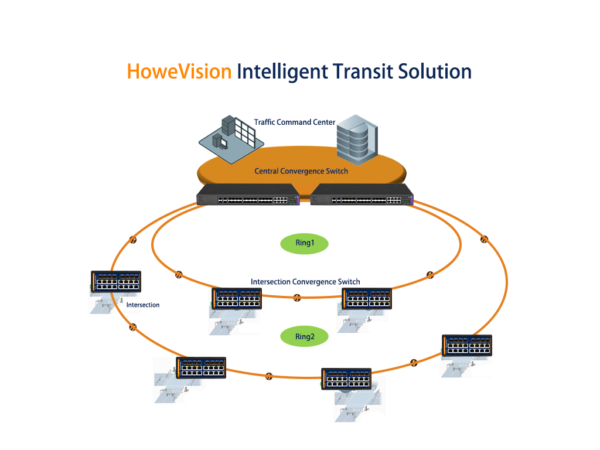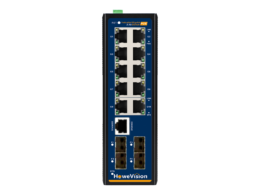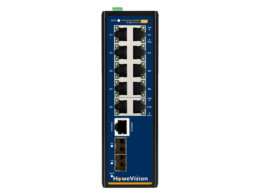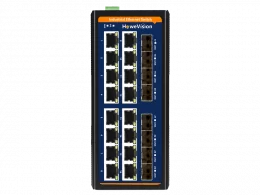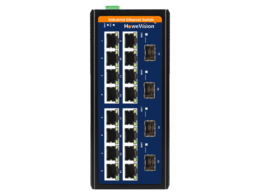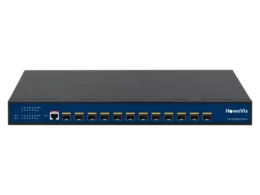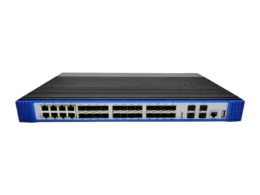Whether high-performance network or low-performance, one thing is common. And that is NETWORK FAILURE.
It does not happen in every case, but higher traffic can cause network failures. There are two solutions.
You should minimize the traffic of data packets. Don’t like that? Leave it. We have another solution.
Second, technology like Ethernet ring protection switching ERPS should be deployed. This option might be favorable and well-known.
So, we will explore the Ethernet ring protection switching ERPS and relevant applications of the G.8032 standard.
Suggested Reading: What is Industrial Ring ERPS Technology?
What is Ethernet Ring Protection Switching(ERPS)?
Have you heard of Ethernet Ring Protection Switching ERPS before? Maybe not. We consider Ethernet Ring Protection Switching our top priority to minimize traffic bottlenecks and implement better solutions.
One question is still pending to answer. Do you know what that is?
What can Ethernet Ring Protection Switching do for the VLAN? Here is what you can expect from this technology.
- It prevents the looping. This feature’s main benefit is consuming minimum energy and contributing to maximum output.
- Network failures are no longer a problem! The recovery time is so fast when compared to other protocols.
- They can help upgrade the networks.
No problem! And no worries at all. We’ll learn more about them in the Advantages section below!
What is G.8032?
Every technology needs a principle to operate. For example, PoE has standards that are different from those introduced by the Institute of Electrical and Electronics Engineering.
So, G.8032 is not a technology but a standard for the Ethernet Ring Protection Switching technology.
The International Telecommunication Union has introduced the ITU-T G.8032 standard for the Ethernet Ring Protection Switching technology.
It helps maintain the network and prevent failure.
Let’s dive deep into the ocean of G.8032.
Multiple Terminologies You Must Know.
There are different terminologies before encoding the G. 8032 Ethernet Ring protection switching.
Without understanding those terms, you might miss the G. 8032 Ethernet Ring Protection Switching picture.
Ring Protection Link RPL node
In G. 8032 Ethernet Ring Protection Switching, nodes are essential in transferring the data packets.
They are connected so that a single node failure will block the flow of data packets through all the nodes.
However, the Ring Protection Link RPL node avoids that scenario. It is the node that can turn on and off.
Ring Protection Link RPL owner Node
Ring Protection Link RPL owner node is nothing special but a control system for the RPL node. This node can block the passage of the data packets through the RPL node.
Since it controls the flow through the RPL node, we call it the RPL owner node.
Neighbor Node
A Neighbor node is a node adjacent to the RPL owner node. Since the system contains multiple nodes connected, every node adjacent to the RPL owner node is the neighbor node.
A neighbor node plays a crucial role in the flow of data packets.
Revertive Mode
In revertive mode, failure recovery occurs, and the RPL node works perfectly after restoration.
Non-Revertive Mode
The RPL node continues to work even if the system has not failed. This doesn’t occur in standard cases.
R-APS message
R-APS, called Ring Automatic Protection Switching, sends a critical message to the nodes.
It can trigger the block and unblock of the RPL node through the owner node.
How does it work?
G. 8032 Ethernet Ring Protection switching works differently in different states. For example, a failure occurs in the network and tries to recover by opening the node.
Let’s study in detail how different states determine the various functionalities of the G. 8032 Ethernet Ring Protection Switching technology.
Ring Idle State
In the States, everything is at the beginning. The network is functioning normally.
The RPL owner node has blocked the RPL node to prevent the loop.
Therefore, we call this state to be the IDLE state.
Ring Protection Switching— Link Failure
One link fails, and RPL comes into action. But the question is— how does all this occur?
Let’s find out.
- A neighbor node fails.
- Adjacent nodes send the R-APS message to the RPL node to trigger further action.
- The RPL owner node unblocks the RPL node to let the data packets pass through it.
- Nodes link through ring protection.
- It maintains the ring topology.
Protection switching mechanisms keep network failures miles away!
Ring Protection Switching— Recovery from Failure
Once the failure has occurred, it’s time to recover.
The failed nodes recover, but the traffic is still unavailable through them. Do you know why? Because the RPL node hasn’t verified the situation yet
The RPL neighbor node sends an R—APS message to the RPL owner node. Then, WTR timers start, and the RPL owner blocks the RPL node again.
In this way, the ring topology isn’t affected, and the system recovers completely within milliseconds.
Two versions of G.8032 Ethernet Ring Protection Switching
There are two versions of G.8032 defining the ERPSv1 and G.8032v2.
Both have different functionalities. Let’s check out how they help.
G.8032v1
ITU-T introduced this standard in 2008.
It supports the majority of devices. However, I have listed some features to get a detailed description.
- It supports a single ring only.
- Port configuration features include the RPL owner ports and standard ports.
- It can support only the revertive switching.
G.8032v2
ITU-T introduced this standard in 2010.
G.8032v2 also has multiple features that are helpful for the operation of the network. It is backward compatible and has all the features available in the G.8032v2.
You can observe the following features:
Ring Type
Unlike version 1, it supports single and multiple-ring topology.
Single-ring topology has only major rings, while multi-ring topology has both Major and Sub-rings.
Port Role Configuration
In port role configuration, it supports:
- RPL owner Node
- RPL neighbor Node
- Ordinary Node
Topology Change Notification
Whenever ring topology changes, it sends a notification. This G.8032 version supports this mode.
R-APS PDU transmission modes on sub-rings
G.8032v2 supports this feature.
Revertive and non-revertive switching
G.8032v2 supports the revertive and non-revertive, both types of switching.
Manual port blocking
Forced switch and manual switch features are available for manual port blocking.
4 Types of Timers in the G.8032
Timer plays an essential role in network configuration and proper administration.
However, we have four types of timers in the ERPS system. These are:
Guard Timers
In network failure, one node fails and undergoes the recovery phase until the RPL node works in its place.
Once the failed node has recovered, it is time to send the R-APS No Request (NR) message to the other nodes in the network. Still, the data packets flow through the involved node until the guard timer starts and expires.
Once the guard timer expires, the R-APS No Request (NR) messages pass through the involved Ethernet ring nodes and go into the Forwarding State.
WTR timer
In case of network failure, one node fails to respond or blocks. Since no flow of data packets occurs, the RPL owner node unblocks the RPL node. The WTR timer prevents sudden up-and-downs after the failed node recovers.
There are two cases here:
- Once the RPL owner node receives the R-APS Signal Fail (SF) message, it unblocks the RPL owner node until the node recovers.
- The timer expires if the RPL owner node doesn’t receive any message. It sends the R-APS message and blocks the RPL node to let the data packets pass.
Hold-Off Timer
The hold-off timer does the job of holding off.
The network failure and recovery requirements vary for each option.
The failure signal uses the ERPS control. Instead, network failure occurs. The hold-off timer starts and then expires. When the timer expires, the signals reach the ERPS.
WTB timer
The WTB timer occurs when the manual switch or forced switch mode is used.
The WTB timer starts in network failure, and nodes are in manual and forced switch states. RPL node blocking and unblocking don’t occur immediately. Instead, the WTB timer expires, and this activity takes place.
WTB timer plays an essential role in the maintenance of the network.
Final Words:
Have you been using Ethernet technology for your networks for a long time? Redundancy and Ethernet blocking are standard in the network. Loop avoidance in an Ethernet network can do most of the job. For example, it prevents redundancy, energy waste, and circular movements in the circle.
Do you want to implement Ethernet technology? Go ahead and purchase the essential tools. But where can you buy all the Ethernet tools? HoweVision Professional can be your partner for the devices. Drop us a line or call and let us know your requirements. We have:
- Ethernet ports
- Ethernet switches
- PoE switches
- Industrial PoE
Are you waiting for what? One call will connect you with us.

